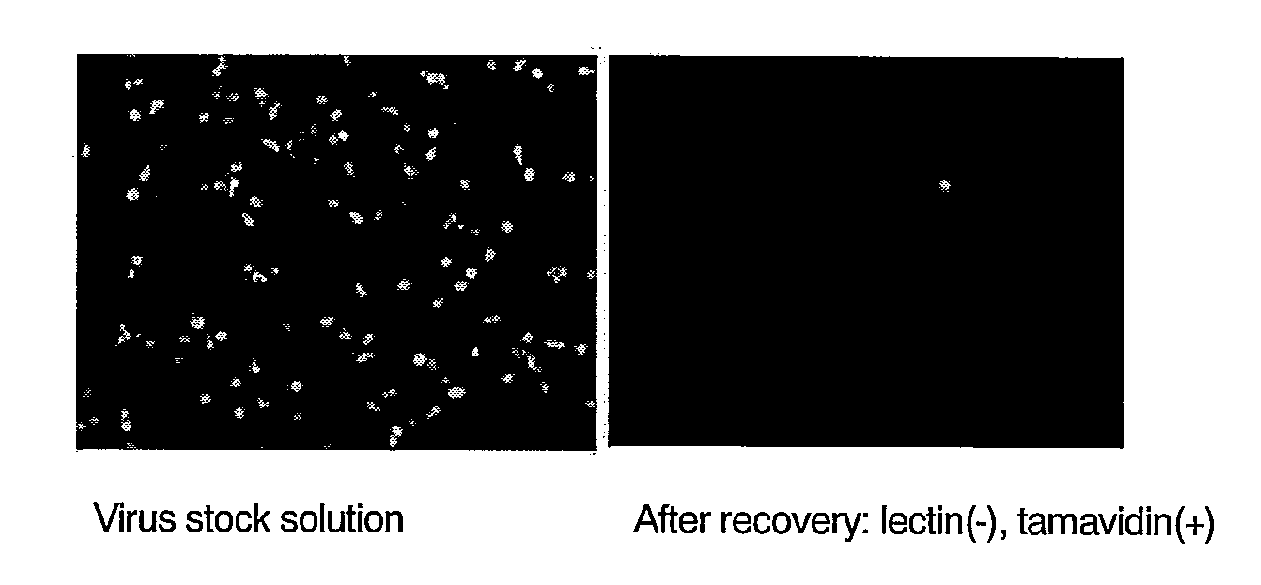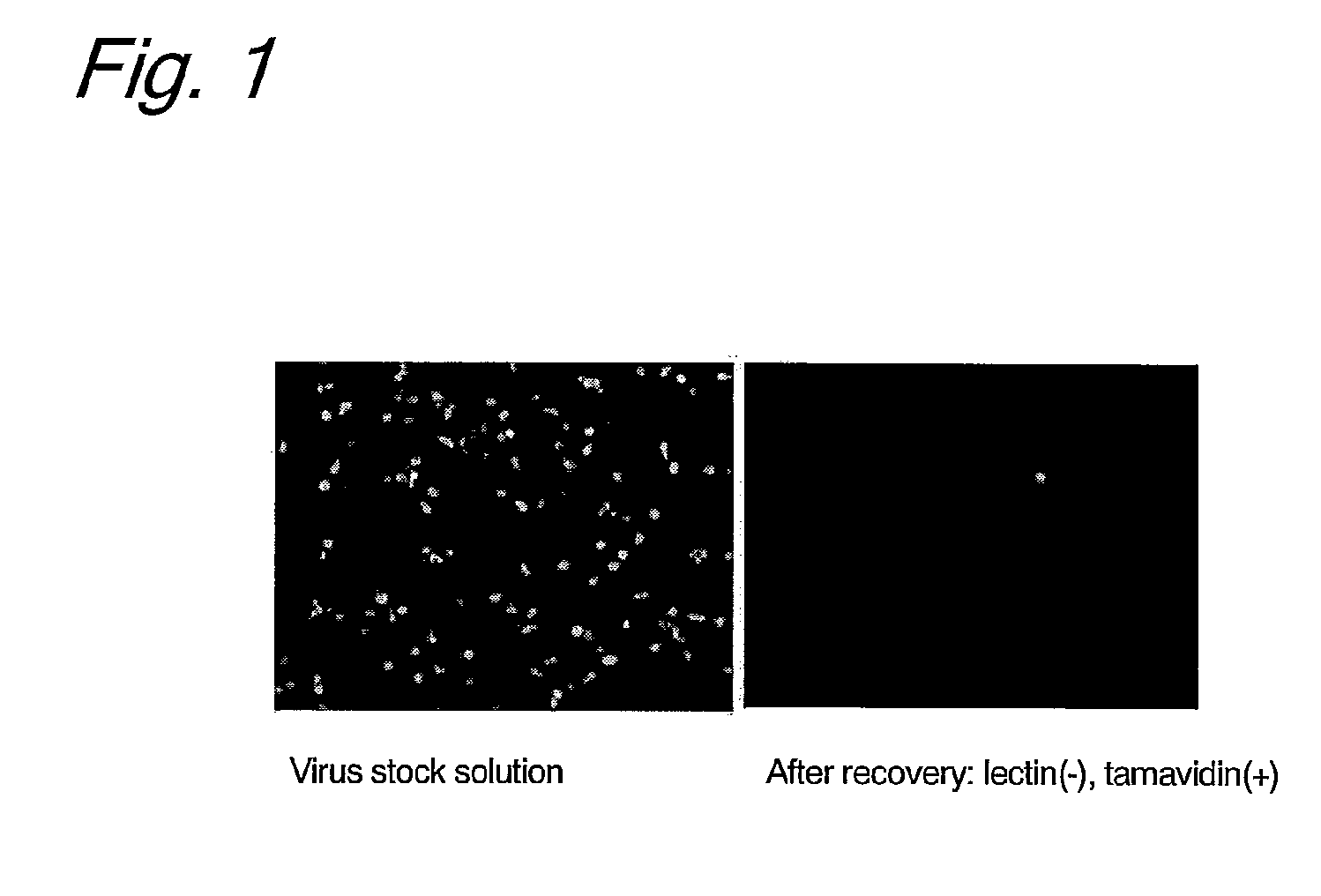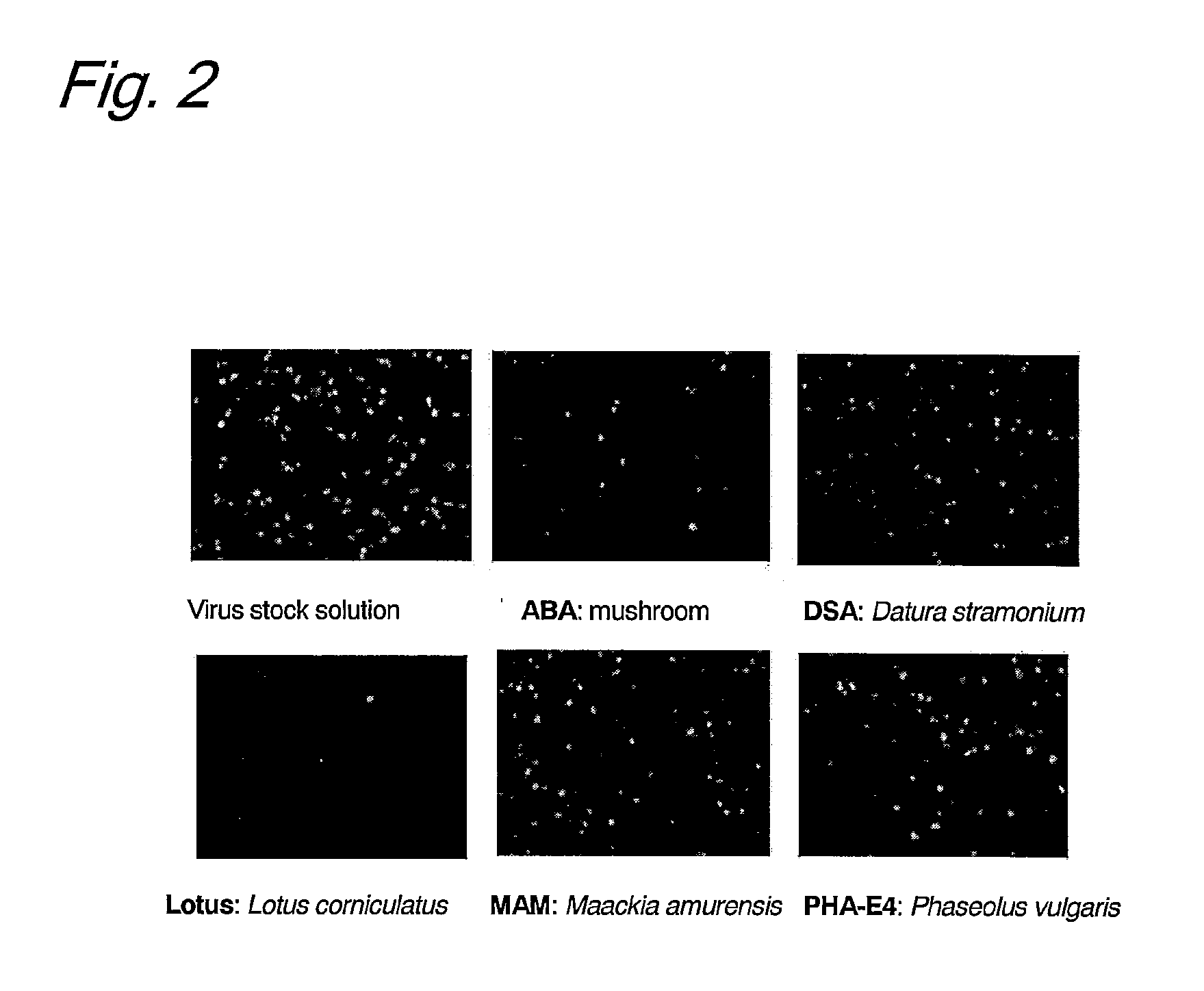Quantitation method of virus
- Summary
- Abstract
- Description
- Claims
- Application Information
AI Technical Summary
Benefits of technology
Problems solved by technology
Method used
Image
Examples
example 1
Screening of Lectin that can Detect HHV
Enrichment of HHV-6 was investigated by allowing a biotinylated lectin to react with a cultured HHV-6 in solution and then to bind to tamavidin-immobilized magnetic beads.
1. Preparation of HHV-6 Solution from Cultured T Cells
Cultured human cord blood-derived T cells were infected with recombinant HHV-6 expressing EGFP (Japanese Patent No. 3923505) to produce an EGFP-type HHV-6 solution.
2. Preparation of Tamavidin Magnetic Beads
Three hundred microliters of magnetic beads having surfaces coated with carboxyl groups (Dynabeads M-270 Carboxylic Acid, Dynal Inc.) were washed with 300 μL of 0.01 N sodium hydroxide for 10 min and then with 300 μL of ultrapure water for 10 min three times. To the washed magnetic beads, 1-ethyl-3-(3-dimethylaminopropyl)carbodiimide hydrochloride (EDC) (Pierce Inc.) dissolved in cooled ultrapure water was added into a final concentration of 0.2 M, followed by shaking at room temperature for 30 min. Then, the magnetic bea...
example 2
Quantitative Determination of HHV-6 in Saliva without Standard Virus
The concentration of HHV-6 in saliva was quantitatively determined without using the standard virus but by utilizing the biotinylated lectin and the tamavidin magnetic beads.
1. Collection of Saliva
Saliva was collected from a subject with Salivette (Salivette cotton, Sarstedt). The subject rinsed the oral cavity with distilled water twice immediately before the collection of saliva and put the inner cotton of the Salivette in the oral cavity to collect saliva for 2 min.
2. Quantitative Determination of HHV-6 by Conventional Method
First, the concentration of HHV-6 in the saliva was quantitatively determined by a conventional method.
HHV-6 DNA in 400 μL of the saliva collected in Section 1 above was purified using BioRobot EZ1 (Qiagen Inc.) and EZ1 Virus Mini Kit v2.0 (Qiagen Inc.) in accordance with the protocol of EZ1 Virus Mini Handbook (Qiagen Inc.).
The resulting DNA was subjected to quantitative PCR. In the quantita...
example 3
Quantitative Determination of HHV-6 in Saliva Using Standard Virus
The concentration of HHV-6 in saliva was quantitatively determined using a biotinylated lectin, tamavidin magnetic beads, and a standard virus.
1. Method of Collecting Saliva
Saliva was collected from a subject with Salivette (Salivette cotton, Sarstedt). The subject rinsed the oral cavity with distilled water twice immediately before the collection of saliva, and placed the inner cotton of the Salivette into the oral cavity to collect saliva for 2 min.
2. Quantitative Determination of HHV-6 by Conventional Method
The HHV-6 in the saliva was quantitatively determined as in Section 2 of Example 2.
It is to be noted that this test was carried out by an researcher with a high degree of training in virus experiments. The results are shown in Table 1.
3. Quantitative Determination of HHV-6 Using Biotinylated Lectin, Tamavidin Magnetic Beads, and Standard Virus
(1) Quantitative determination of HHV-6 using biotinylated WGA
To 400 μ...
PUM
 Login to View More
Login to View More Abstract
Description
Claims
Application Information
 Login to View More
Login to View More - R&D
- Intellectual Property
- Life Sciences
- Materials
- Tech Scout
- Unparalleled Data Quality
- Higher Quality Content
- 60% Fewer Hallucinations
Browse by: Latest US Patents, China's latest patents, Technical Efficacy Thesaurus, Application Domain, Technology Topic, Popular Technical Reports.
© 2025 PatSnap. All rights reserved.Legal|Privacy policy|Modern Slavery Act Transparency Statement|Sitemap|About US| Contact US: help@patsnap.com



